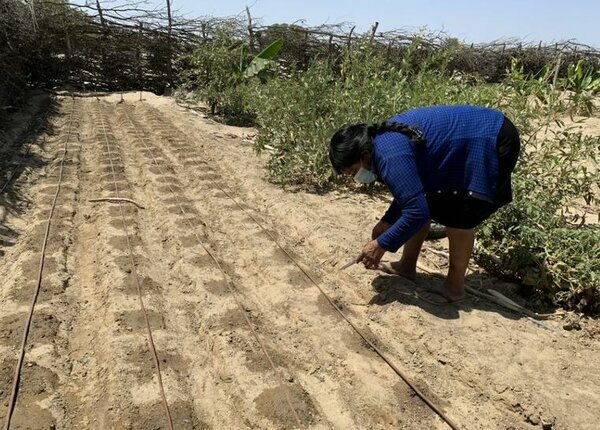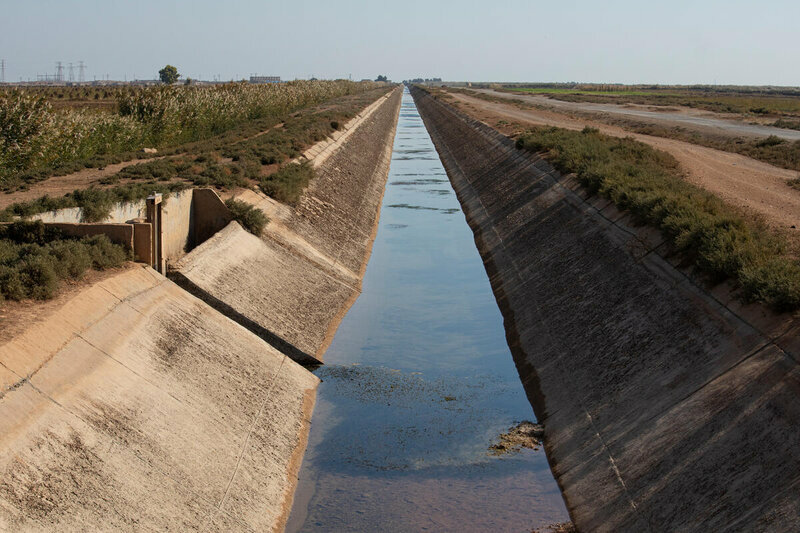World Water Day: How the World Food Programme works to make every drop count

Spring kicks off tidings of new beginnings for many in the Northern Hemisphere. Perhaps it’s also a reminder of how fragile the seasons that have traditionally been taken for granted the world over have become.
Summers spill into winters and winters spill into summers. Water gushes where it should trickle and trickles where it should pour freely, thanks to climate extremes.
It will come as no surprise that the most food-insecure people live in developing countries and in arid areas where little water is available – or too much water, of too poor a quality. Water is essential for food production, but decades of poor water management, misuse and pollution have degraded freshwater supplies and ecosystems.
The lack of water is also linked to poor soils. Up to 40 percent of the planet’s total land area is degraded, according to the UN, forcing farmers to abandon their fields or leaving them with dry land that can barely produce food.


Soils' ability to absorb carbon is also linked to their quality. Bad soils mean more carbon heading into the atmosphere, contributing to climate change, intensifying extreme weather events, accelerating land degradation and perpetuating the cycle.
Floods occur, cutting off people’s links to markets, while droughts limit food production, trash harvests and kill much-cherished livestock.
The World Food Programme (WFP) helps to replenish water-depleted soils and aquifers through programmes that provide communities with water access and availability. These benefits also help to increase people’s food security, empowering them over the long term.
This is how we do it...

In 2021, WFP provided 8.7 million people across 49 countries with food assistance in exchange for asset-creation activities such as soil and water conservation, the building or fixing of irrigation canals, dams, ponds, dykes as well as flood barriers.
Through land rehabilitation and management, ‘fixing’ encroaching sand dunes in coastal areas, planting trees or harnessing rainwater, WFP and its partners work with communities to restore both water and soil productivity – improving people’s chances of building food-secure futures and better adapting to climate extremes.
WFP also works with communities to anticipate water-related hazards with early-warning systems and financing before potential disasters. And WFP protects people against climate impacts with insurance and financial safety nets, providing payouts after a hazard occurs. In 2022, WFP provided financial protection against climate events to 3.8 million people.
Did you know...

1. A quarter of the people around the world use unsafe drinking-water sources. Coupled with inadequate sanitation this can affect how people prepare and eat their meals by increasing the incidence of waterborne diseases, a major cause of malnutrition.
2. Reduced access to water for agriculture – and, of course, for people to drink – has implications for gender equality, education and peace, all of which hamper efforts to tackle the global food crisis.

3. Inadequate access to water increases the burden of water collection, which disproportionately falls on women and girls who spend 200 million hours every day collecting water – affecting their education and limiting opportunities for livelihood activities.
4. Insufficient water and sanitation facilities can result in school students, especially girls, missing significant time in class or even dropping out. Ingrained gender inequalities limit equal access to, and availability of, sufficient and nutritious food, pushing communities further into hunger.
5. Poor crop production, due to insufficient water supplies, can exacerbate conflicts and trigger social tensions in communities already under stress from existing vulnerabilities. Around 2 billion people live on land vulnerable to desertification – a process which could displace an estimated 50 million people by 2030.
